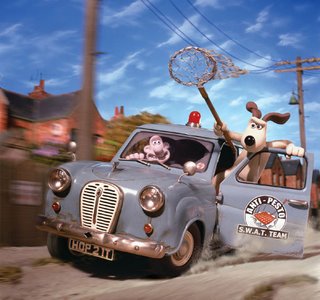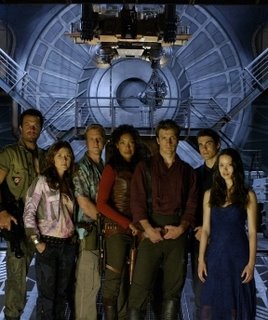 Z for Zorro! Z for Zzzz, more like. A hero of American cinema since the
Z for Zorro! Z for Zzzz, more like. A hero of American cinema since the Foxy Boxing
 Z for Zorro! Z for Zzzz, more like. A hero of American cinema since the
Z for Zorro! Z for Zzzz, more like. A hero of American cinema since the Arse City Blues
 Not so much a thriller as a teenage boy’s bedroom wall brought to life, the beautifully photographed but entirely empty treasure-hunt potboiler Into the Blue offers Jessica Alba (above, jesus) gambolling around in a skimpy bikini as a welcome distraction from trying to make sense of an unhinged and derivative plot that is woefully overextended.
Not so much a thriller as a teenage boy’s bedroom wall brought to life, the beautifully photographed but entirely empty treasure-hunt potboiler Into the Blue offers Jessica Alba (above, jesus) gambolling around in a skimpy bikini as a welcome distraction from trying to make sense of an unhinged and derivative plot that is woefully overextended. Paul Walker stars alongside Alba as Jared and Sam, young lovers who live humbly on houseboat in the Bahamas. She appears to work feeding fish to orcas at an aquarium, while he is repairing an old boat to search for buried treasure. Their rival in the doubloon hunt is Bates (played by Josh Brolin), who has a bigger boat and a nasty piratical sneer. In a pair of crippling coincidences straight out of 1977's The Deep, Jared and his friends discover the remains of a legendary Spanish shipwreck, chock full of golden artefacts, and conveniently less than 100 metres away, a recently crashed drug-running plane with 800lbs of cocaine on board. Sam and Jared, clean-living surf-warriors, want nothing to do with the coke. Somewhat less principled, his lawyer buddy Bryce (Scott Caan) and new girlfriend Amanda (Alba's former co-star on Alias, Ashley Scott) suggest fishing out and selling the coke to a local drug dealer to buy the equipment necessary to excavate the treasure. It’s Catch 22, but none of these people give the impression they can count that high.
Director John Stockwell presents characters that are tissue thin, so the clunky second-half suspenses and artificially mounted tension evaporate off them like sea water from warm skin. The four principals bravely soldier on, reeling from the weight of the thing, bouncing off shock character developments and skipping over the enormous potholes in the plot. When the final reel asks us to follow two separate, but interwoven threads of narrative come to their violent conclusions, with harpoons, explosives and strategically timed shark bites all coming into play, its easier to just sit back and let the luxuriant underwater photography wash over you, like a chilly October dream of a week on a hot white beach.
Into the Blue is the opposite of an essential film, being more an opportunity for some much-needed cinematic sightseeing, but there are mild action thrills and Alba-inspired thigh-rubbings to be had as long as you keep expectations low.
Clay Idols
 It’s been ten years since the last proper Wallace and Gromit film, 1995’s A Close Shave but time seems to stand still in this most intricate world, with creator and director Nick Park having spent about half of the intervening decade manipulating his plasticine pals for their feature length debut.
It’s been ten years since the last proper Wallace and Gromit film, 1995’s A Close Shave but time seems to stand still in this most intricate world, with creator and director Nick Park having spent about half of the intervening decade manipulating his plasticine pals for their feature length debut.
These knowing puns and contemporary gags include the titles of a row of books that hide Wallace's secret cheese stash (like “East of Edam” and “Grated Expectations”.) Another big laugh comes when a snatch of the dreary Art Garfunkel ballad “Bright Eyes” the theme from 70s bunny-disaster cartoon Watership Down, appears on the soundtrack, cuing a perfectly judged stare to camera from a sighing Gromit, breaking the fourth wall in a joke more sophisticated than Park has attempted before. Wallace reads Aye-Up magazine, and fetches his milk from a fridge made by the Smug company. These rib-nudging jokes fit perfectly well in the hermetically sealed universe Park creates, with W&G retaining their own peculiar charm without being corrupted by DreamWorks desire to broaden their appeal as they extend the running-time. They also, thankfully, manage to extend the half-hour, episodic nature of the work into a three act feature, a challenge in itself. The boisterous script keeps things moving briskly from start to finish and displays all the wit we've come to expect. It is smart, snappy, pun laden, and intensely British, glorying in the world of the toolshed inventor, the giant marrow grower and the angry torchlit mob set on destroying the monster.
Serenity Now!
 Taken off the airwaves back in 2002, before the end of its first season and after just eleven episodes, Buffy creator Joss Whedon's sci-fi television show Firefly has gone on to develop a sizeable cult following, an internet-based community vocal and sizeable enough to spur Universal Pictures into making a mid-budget big-screen spin-off, Serenity.
Taken off the airwaves back in 2002, before the end of its first season and after just eleven episodes, Buffy creator Joss Whedon's sci-fi television show Firefly has gone on to develop a sizeable cult following, an internet-based community vocal and sizeable enough to spur Universal Pictures into making a mid-budget big-screen spin-off, Serenity.Whedon’s rollicking, rambling space-set six-gun adventure fully deserves its second chance.
The remainder of the story follows a path based on secrets and revelations, and is worth discovering for yourself, so I won’t spoil it.
It's not all glory though. The film is not without its flaws - major structural gaps are barely held together with explosive misdirection and vast reams of story are rushed through with scant regard for newcomers. There are a few too many bad guys, far too many premises and a spiky legion of characters to keep track of. Most damaging is the overwhelming feeling that the events in the film take place in the middle of something much bigger but Whedon blithely assumes his audience is familiar enough with the Serenity crew and the situations they find themselves in that he can skimp on the niceties of character development. It's tough shit to first-timers, like me.
Curiously for a balls-out Hollywood adventure movie, it’s genuinely funny, but writing a gag is in Whedon’s blood. His grandfather John was a television comedy writer for early sitcoms like Leave it to Beaver while his father Tom wrote Benson and The Golden Girls. He also has the rare gift of knowing precisely when to pull an audiences internal strings, with real tension and palpable danger seemingly appearing out of nowhere, and a couple of frantic high-octane set-pieces that glue you to your seat.
Most of science-fiction is old westerns in snazzy jumpsuits. The first wave of Asian directors revered the vast Fordian mesas of those monochrome oaters and adapted the heroic stories wholesale into samurai cinema. Together these two genres provided the foundation for Lucas and Star Wars and almost everything similar since. Whedon has consciously come full circle, ripping his references magpie-like from everything he likes that has gone before and still managing to be both wildly original and tellingly obvious.
Whedon is no gom and grabbed his chance to tell the rest of his abbreviated story with both hands, but makes the rookie mistake of trying to cram everything into two hours. His might be a complicated, half-explained story that still manages to have about five different endings but none of this matters when it is told with innate charm and is thoroughly entertaining.







